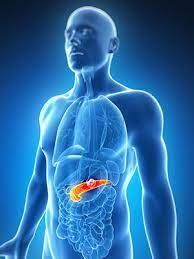Waves and assaults of COVID 19 have turned into the new ordinary. Yet, we should comprehend that each wave is more irresistible and deadlier. The third influx of this infection is inescapable. How huge or little, nobody knows yet. Everybody is attempting to make a savvy surmise yet essentially they are on the whole theories. Here are the couple of motivations behind why we think Covid-19 3rd, 4th,6th… .. waves are unavoidable:
1. Debilitated Immunity by New Virus
The Virus transforms over a period because of different human and ecological variables that are once more, obscure. What's more Each Virus change is somewhat divergent in its contagiousness and seriousness. Also every time this infection hits our body, we can produce a few antibodies to battle it. The issue is that given sufficient opportunity, this infection can make an adequate number of forms of itself that can then as of now not be affected by the antibodies that were made while battling the previous variations. AlleviareIndia helps hospitals to import medicine under named patient program.
2. Slow Vaccination Rate
The world is a huge spot with over 7.8 Billion individuals and inoculating every one of them is a long and drawn-out task . And keeping in mind that we are attempting to inoculate every one of them, the infection is likewise tracking down better approaches to make due. Over the most recent a half year, just around 12% of total populace has been completely immunized and under 25% individuals have been to some extent inoculated. Going on like this, we will require around 3 years to immunize the total populace. So it is easy to envision that when we can inoculate every one of, the actual antibodies may get obsolete to battle the more up to date more remarkable transformations. It doesn't imply that we don't immunize, which will most likely shield us today, yet it really intends that there may be fresher immunizations needed as we head into the following ten years. Pharmaceutical consulting companies imports named patient medicines on patient needs.
3. Lockdown Openings and Complacency
We can't remain in a lockdown perpetually, however the openings need to accompany substantial admonitions and clear directions to guard ourselves. Furthermore the residents additionally need to volunteer to instruct themselves and stay on high alert to endure the pandemic and guarantee that the transmission is ended at the initial step itself and we don't allow the infection an opportunity to transform our bodies into a host for change.
4. Kids
Kids are not inoculated, there is no probability of them having these chances at any point in the near future. The center is to get grown-ups inoculated first so we can get the economy on target. That may be the correct thing to do given the hit on economy and the number of individuals have confronted passings of grown-ups in their families . Nonetheless, we can't turn away from the chance of the third or forward flood of this pandemic to be based on kids by the same token. Kids for the most part have more grounded safe frameworks and on the off chance that the infection can in any capacity transform to them, we may have a considerably more impressive strain of this infection hanging tight for us. AlleviareIndia Life Sciences Private Limited procured medicine to hospital and patient under managed access program
5. The Unknown Factors
There are such countless things we actually don't be familiar with this infection. Like how long do our regular antibodies work, how long the immunization antibodies work. The number of more variations are conceivable or logical. Thus some more. The following waves could be more regrettable as it will again take more lives and hit economy and toss considerably more individuals under the neediness line.
Fundamental concealing, santization, inoculation and voyaging just when essential is the best way to stop the transmission of infection and forestall a few deadlier changes and rushes of something similar.







